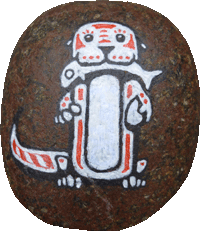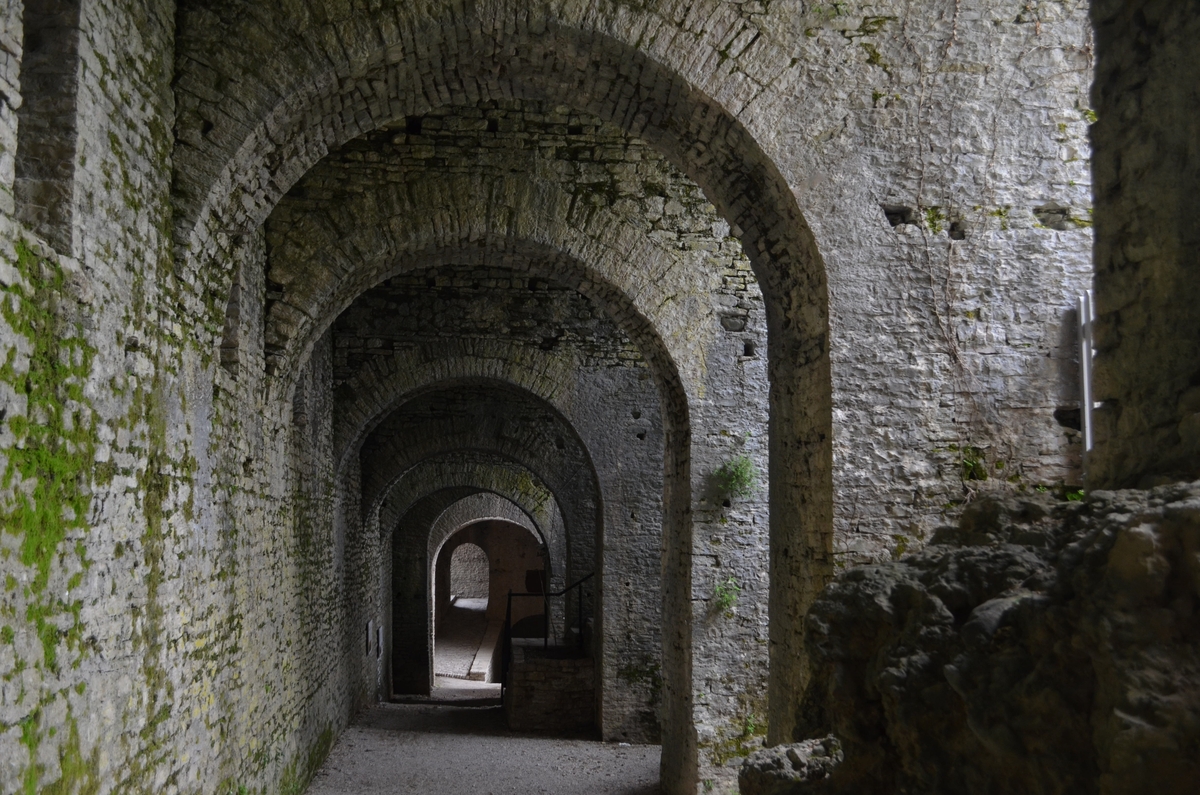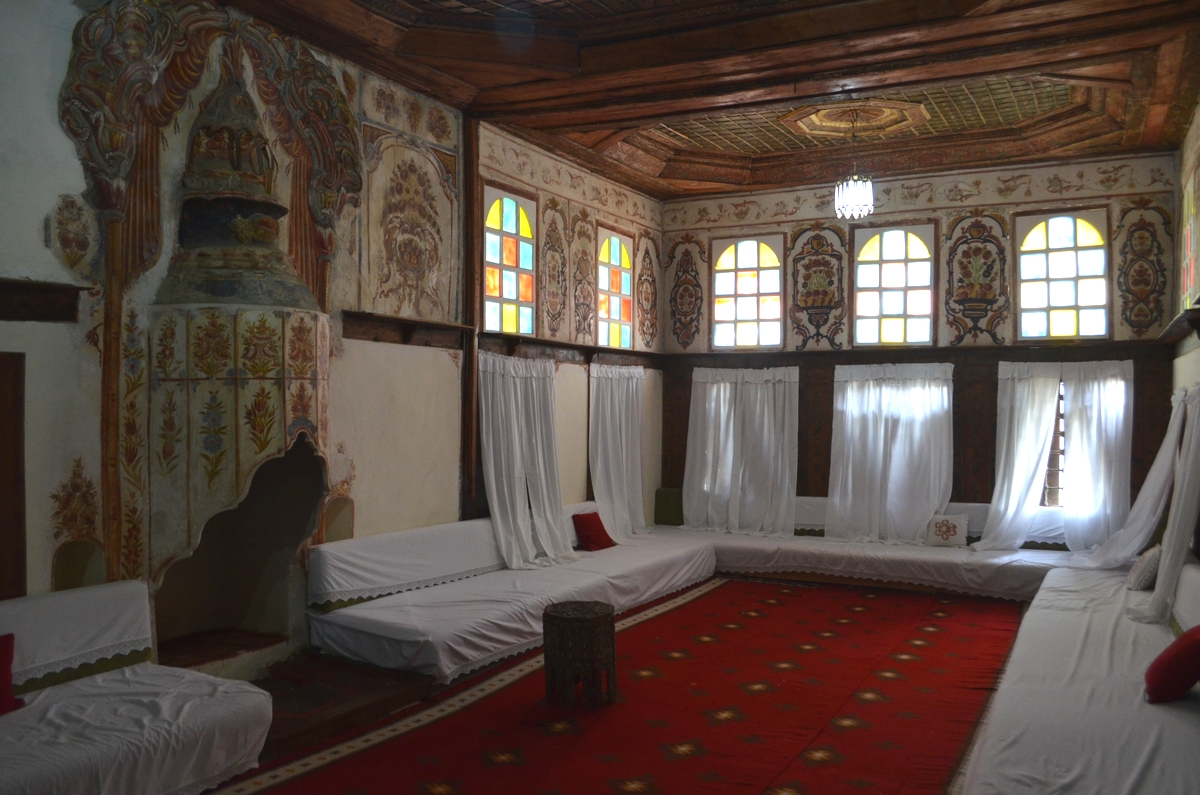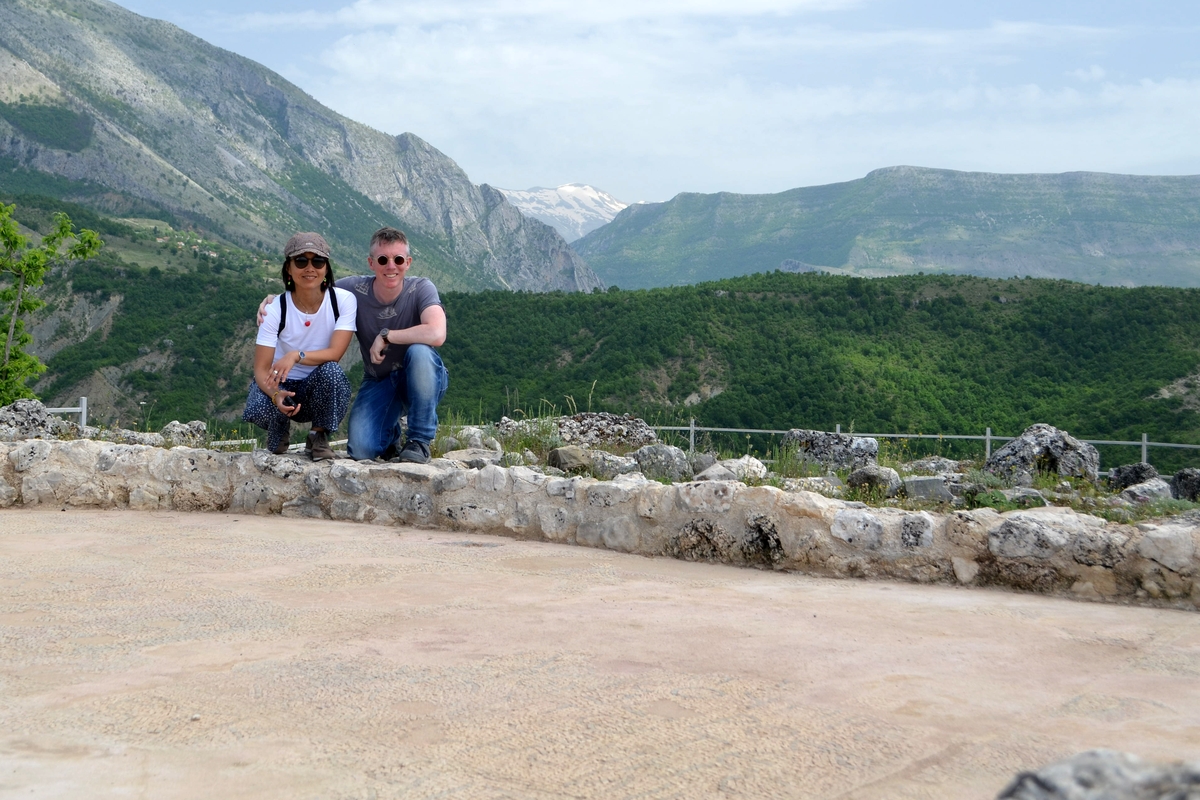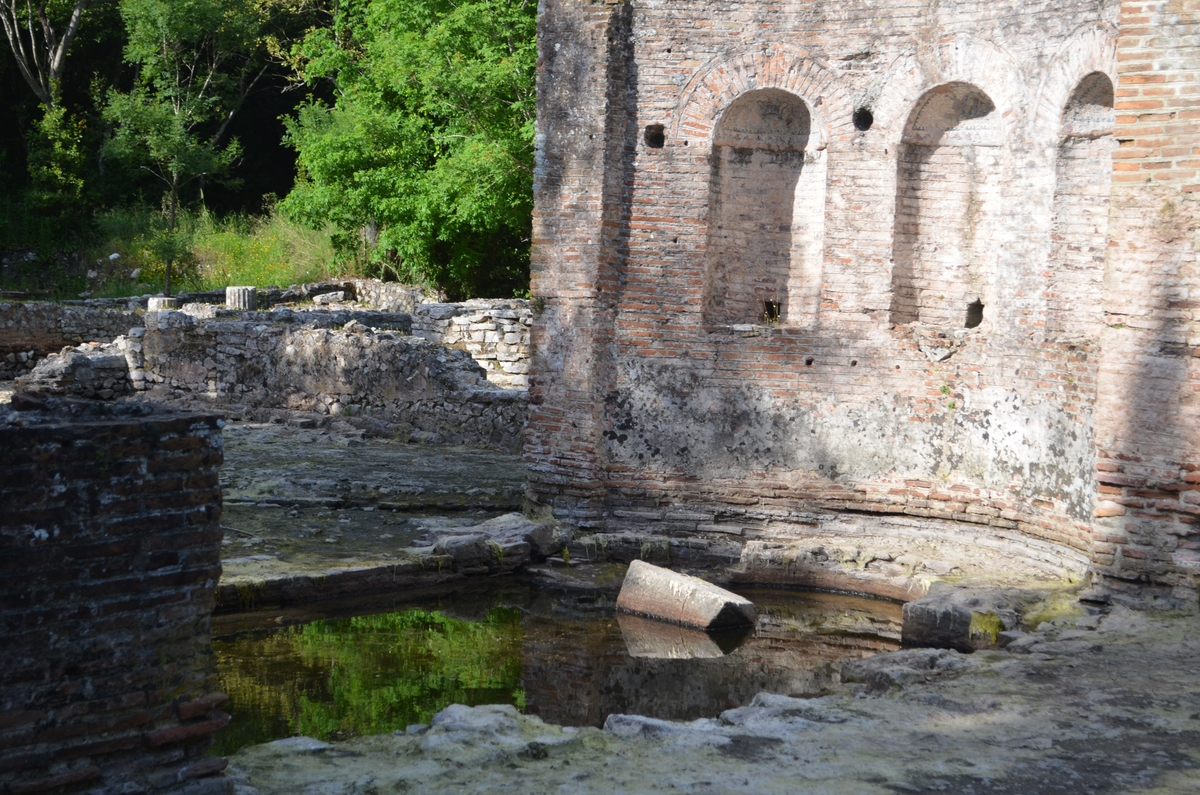29 April 2018
Today was a classic. Gjirokaster in the morning, exploring the old citadel above the town and then one of the Ottoman town houses that are so iconic, with their roofs of random limestone slates piled up without mortar. The whole visit was brought more to life by having read Ismael Kadare’s “Chronicles of Stone” about growing up in Gjirokaster during the Second World War; the Zekate House had all the same rooms as his family home. The citadel was also made more evocative, as Kadare had described how almost the whole population of the city camped out in those huge arched galleries of the fortress while bombs rained down from above.
Next we drove across the valley to the ancient site of Antigonea, the city of King Phyrrus; he of the “phyrric victory”. There’s not much to the remains, just the bottom couple of courses of limestone blocks showing the outlines of houses and workshops. But the site itself is a wildly isolated hilltop, surrounded by mountains and with superb views across the Drino valley to Gjirokaster. At the very end of the site we found a 6th century church with the remains of a patterned mosaic floor, just open to the elements. It was very quiet and peaceful.
Across the mountains next, to Butrint on the coast, a lovely trip that we broke only to stop and visit the blue eye, which is a spot where a large pool bubbles up out of the limestone, crystal clear and, yes, a definite shade of blue. Also oodles of tourists and lots of bar restaurants. This is a beauty spot that has definitely ended up on “the itinerary”.
Butrint is wonderful. Hint: arrive from the south. The drive around Butrint lake is scenic and you get to take the rickety chain ferry across the channel by the old Venetian fort. Butrint itself is a jumble of Roman and Hellenistic ruins on a steep wooded hill almost surrounded by water. The remains of buildings appear before you in sunny glades or shaded nooks as you explore, it’s an enchanting way to spend a couple of hours. We may have been lucky arriving at 4pm and so avoiding the crowds. Not that the Albanian definition of “crowd” is anything like what you might find at busy tourist sites in Italy for example.
We ended the day in Sarande, a coastal resort that straggles a few kilometres along the coast with identikit high rise hotels and many more under construction. Our hotel was shiny and new, had a very nice room and a bar floating over the water. We strolled along the seafront at dusk to a recommended seafood restaurant, Gerthela, and had simple grilled bass and bream. When a seafood restaurant in a resort town has no outside tables and is mostly filled with Albanians, then it has to be the food that’s good. When we were indecisive about fish, our waiter took us into the kitchen to pull all the various options out of their polystyrene boxes (fresh from the market!) to decide from.
Related Images:
